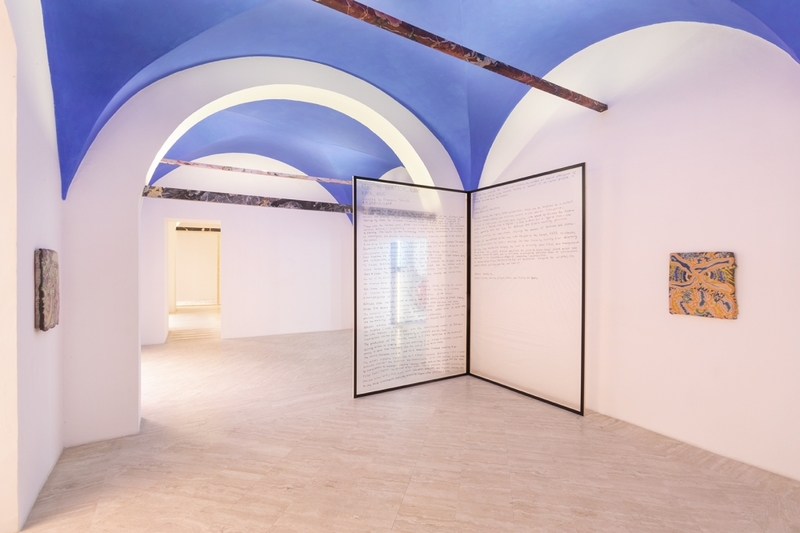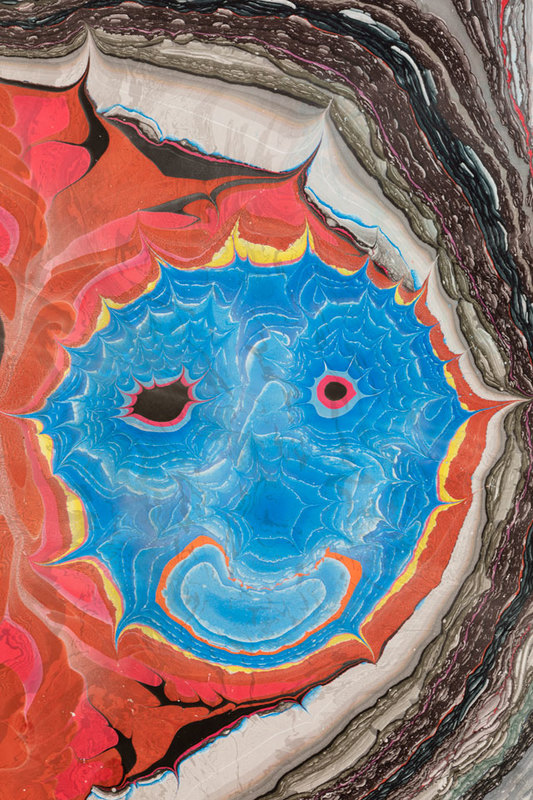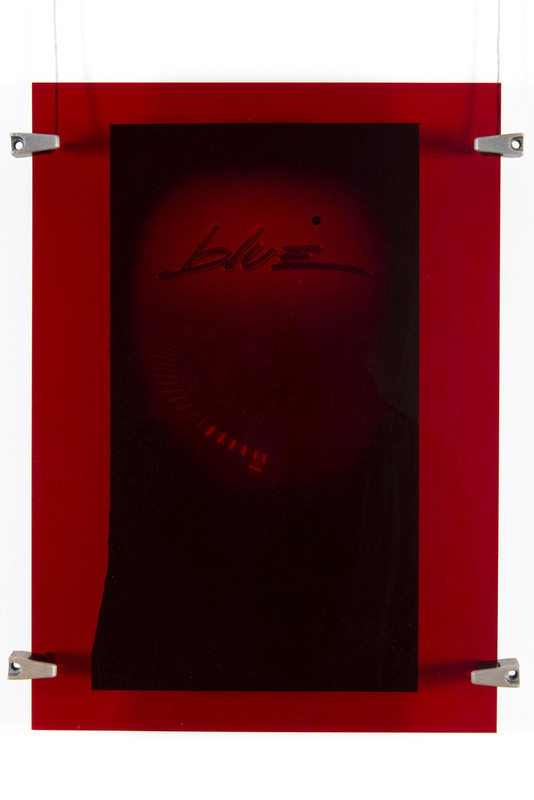Artist Spotlight: Kerstin Brätsch
Current exhibition: Kerstin Brätsch_Ruine / KAYA_KOVO, Fondazione Memmo, Rome, 4 May 2018 – 11 November 2018.
Kerstin Brätsch_Ruine / KAYA_KOVO opened to the public at Rome’s Fondazione Memmo on 4 May and will be on view until 11 November. The show is curated by Francesco Stocchi, debuting the German-born, New York-based artist in the Italian capital.
As the title implies, the exhibition is divided in two halves. The Foundation’s largest gallery space is designated to _Ruine, which is a presentation of works solely by Kerstin Brätsch. KAYA_KOVO, on the other hand, occupies the smaller space and is a collaborative project between Brätsch and her longstanding artistic partner, studio neighbour and sculptor, Debo Eilers. Though the artists’ practices adopt different media and subject matter, it is the juxtaposition between their two aesthetics that destabilises the conventions of pictorial language and the viewers’ expectations.
Brätsch’s practice has become renowned for adopting a strategy of co-authorship. She does this in order to question and undermine the eminence attributed to the figure of the painter. Her wry approach to the modernist notion of the artist as a protagonist is threaded throughout the exhibition.
 Kerstin Brätsch_Ruine / KAYA_KOVO, installation shot. Image courtesy the artist and gallery.
Kerstin Brätsch_Ruine / KAYA_KOVO, installation shot. Image courtesy the artist and gallery.
In her ‘Marbling Paintings’, from the ongoing series Unstable Talismanic Rendering, which began in 2013, Brätsch and her team drip inks and solvents onto a liquid surface to produce a composite pattern resembling marble. The work appropriates scagliola techniques, a traditional method for decorating architectural structures in a way that imitates the patterns found in the stone.
This work is the result of a four-person collaboration involving artisans and artists alike – once again undercutting narratives associated with painting. Brätsch is not afraid to combine the languages of craftsmanship and painting, employing the German marbler Dirk Lange and Italian artisan Walter Cipriani to facilitate the works’ creation. Her practice focuses on the boundaries between artworks and their method of exhibition. With collaboration playing such a fundamental role, she explores patterns of communication between individuals and examines how images are exchanged, disseminated and produced.

Kerstin Brätsch, Unstable Talismanic Rendering Psychopompo (with gratitude to master marbler Dirk Lange), detail, 2018. Image courtesy the artist and gallery.
Brätsch champions the unpredictable and what is beyond human control (such as gravity, adhesion and individual spontaneity). Partnering people from various backgrounds, with alternative perspectives, allows serendipity to play a significant role in the process of creating an artwork.
Brätsch’s oil paintings resist categorisation. She will often use magnets to hang works on gallery walls and sheets of glass as frames to emphasise her attention to the exhibition display. Since they are often realised in large-scale, with materials seldom seen in painterly practices and displayed in unconventional ways, her works expand the boundaries of the medium.
In the Fossil Psychic_Stucco Marmo series, for example, bright colours, strange combinations of materials and contorted shapes exist liminally, within the space between the figurative and the abstract. Oversized faces emerge through the composition, like mythical creatures. But, at the same time, the images’ artificiality reflects the pressure that painting is exposed to with the increasing dominance of digital technologies.

Kerstin Brätsch, Untitled, 2010. Spray painted New York Times advertisement, plexiglass, clamps.
Cover image: Kerstin Brätsch_Ruine / KAYA_KOVO, installation shot. Image courtesy the artist and gallery.
Author: George Greenhill

